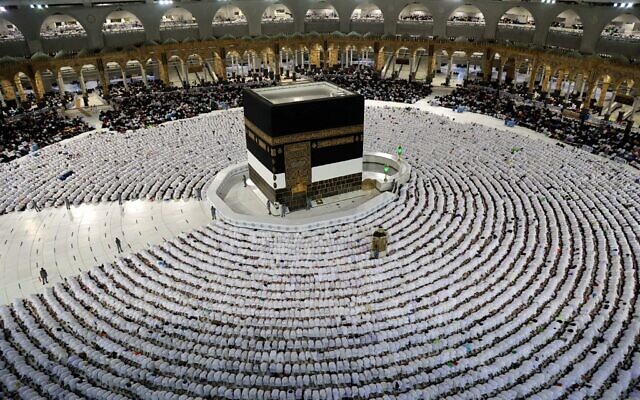Over 2 million muslims begin annual Hajj pilgrimage in Saudi Arabia

A total of 3,300 Kenyan Muslims are participating in this year's Hajj pilgrimage in Mecca and are looking forward to enjoying the accommodation arrangements made by Saudi Arabia.
More than 2 million Muslims have arrived in Mecca, Saudi Arabia, to begin this year's annual Hajj pilgrimage.
These pilgrims, who are from all over the world, started their journey towards the Grand Mosque on Friday. They will later head to Mina to start the Hajj rituals and follow the steps of the Prophet Mohammed (PBUH).
More To Read
- Kenya opens Jeddah consulate, deepening Saudi ties
- 5,000 Kenyan Muslims to take part in 2026 Hajj pilgrimage
- Hajj pilgrims warned against using unauthorised agents to avoid fraud
- Mombasa Hajj agents cry foul over SUPKEM's control, seek State intervention
- SUPKEM under fire as Kenyan pilgrims decry mismanagement during 2025 Hajj
- Motion filed to delist Kithure Kindiki, Kipchumba Murkomen from Roll of Advocates over protest crackdown
Mina, located 7 kilometres northeast of the Grand Mosque, holds significant importance between Mecca and Muzdalifah.
This valley, surrounded by mountains to the north and south, is inhabited only during the Hajj season and is within the boundaries of the Great Mosque.
A total of 3,300 Kenyan Muslims are participating in this year's Hajj pilgrimage in Mecca and are looking forward to enjoying the accommodation arrangements made by Saudi Arabia.
The Saudi News Agency reported on Thursday that the country would ensure pilgrims are offered a comfortable stay at the start of the rituals.
Preparations include four hospitals to handle emergencies and departments specialising in managing heat stress and sunstroke.
Additionally, multi-story residential towers have been built in Mina to host over 30,000 pilgrims. These towers feature contemporary designs that reflect the urban identity of the sacred sites.
The pilgrimage is a central tenet of Islam and one of the Five Pillars of Islam. All Muslims who are physically and financially capable must undertake the five-day Hajj at least once in their lifetime.
The Quran states, "Indeed, as-Safa and al-Marwah are among the symbols of Allah. So whoever makes Hajj to the House or performs 'umrah, there is no blame upon him for walking between them. And whoever volunteers good—then indeed, Allah is appreciative and Knowing" (Surah Al-Baqarah 2:158).
During Hajj, male pilgrims wear an ihram, which consists of two unstitched white cloths. Female pilgrims wear modest, loose-fitting clothing with headscarves and abstain from makeup and perfume.
Upon arrival in Mecca, they perform tawaf, the ritual circuit around the Kaaba, moving counter-clockwise in the seven-minaret Grand Mosque.
On Saturday, pilgrims will head to Mount Arafat for a daylong vigil.
Mount Arafat is where the Prophet Muhammad delivered his final sermon, known as the Farewell Sermon. Healthy pilgrims often make this journey on foot, while others may use buses or trains.
The timing of Hajj varies each year, occurring over five days in the second week of Dhu al-Hijjah, the final month of the Islamic lunar calendar.
Most Hajj rituals take place outdoors with minimal shade. When Hajj falls during the summer months, temperatures can exceed 40 degrees Celsius.
The Health Ministry has warned that temperatures in the holy sites might reach 48 degrees Celsius, prompting many pilgrims to carry umbrellas for sun protection.
After worshipping at Arafat on Saturday, pilgrims will travel a short distance to Muzdalifah to gather pebbles for the symbolic stoning of the devil at pillars in Mina.
Pilgrims then return to Mina for three days, coinciding with the Eid al-Adha holiday. In Kenya, Interior Cabinet Secretary Kithure Kindiki declared Monday, June 17, a public holiday to mark Eid-al-Adha.
During Eid, Muslims who can afford it slaughter livestock and distribute the meat to the needy. After this, pilgrims return to Mecca for the final circumambulation, known as the Farewell Tawaf.
Top Stories Today













































